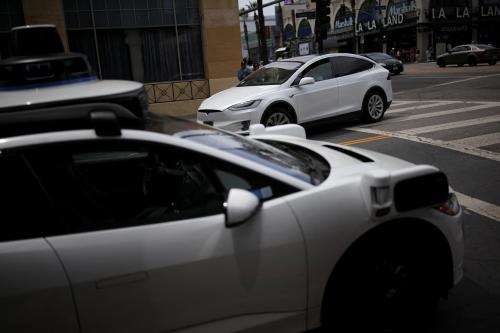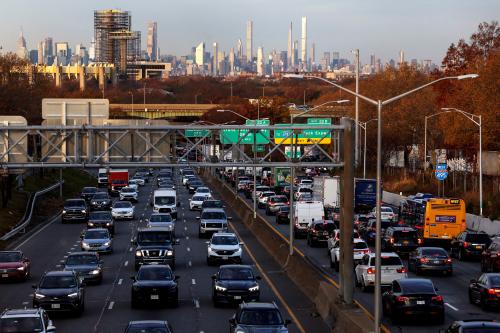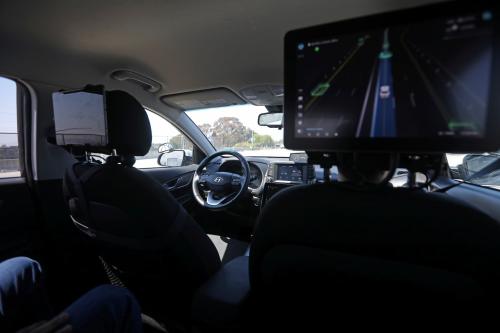On February 4, driverless cars took one step closer to becoming mainstream when the National Highway Transportation Safety Administration stated that computers could be considered legal drivers of vehicles. This news followed shortly after U.S. Secretary of Transportation Anthony Foxx visited the Consumer Electronics Show in Las Vegas and the North American Auto Show in Detroit in January. Both industry events highlighted new autonomous features that technology companies and automakers plan to introduce into new prototypes and car models. The parallel efforts of Silicon Valley and Detroit to develop driverless car technology prompted the Obama administration to announce $4 billion in spending over the next decade on research and development for driverless car technology. With the combined efforts of the technology industry, automakers, and federal regulators, driverless cars could achieve widespread use sooner than many drivers and policymakers might expect.
Multiple approaches
The arrival of driverless cars did not always look so certain: In 2004, MIT economists Frank Levy and Richard Murnane declared that a robotic car could never handle the complexity involved with turning left in traffic. That same year, no team finished the Defense Advanced Research Projects Administration Challenge to navigate a desert racecourse with an autonomous car. However, a repeat of the challenge yielded a winner in 2005, and in 2009 Google started testing its first driverless cars. Apple and Uber have also begun their own research into driverless cars. In a short time driverless cars have gone from crashing in the desert to navigating city streets better than most human drivers.
The automobile industry has taken a more incremental approach to driverless technology. For years, automakers have added a number of automated safety features in cars, such as forward collision avoidance with automatic braking, lane departure warnings, and adaptive headlights that pivot around curves in the road. If each of these adaptations enables humans to drive safer, then their logical conclusion could be to completely automate a vehicle. Automakers already compete on the safety features of their cars, so the first company to mass-produce a driverless car would gain an advantage. Tesla Motors pushed an autopilot software update to its Model S line of electric sports cars in October 2015. A mass-market driverless car could soon enter the market.
Paving the way
With both technology companies and automakers busy developing driverless cars, it falls to state and national policymakers to draft a set of regulations that pave the way. As of this writing, only four states and the District of Columbia have passed laws allowing driverless car testing. New regulations would need to integrate driverless cars into existing rules designed for human drivers, which poses difficult questions about liability. For instance, would a carmaker be liable in the case of an autonomous car collision? While the legal issues are fraught, the payoffs for effective driverless car policy are abundant. Reductions in traffic accidents and improved fuel efficiency are some potential benefits to passengers, while the ability to park in remote locations will reduce demands on city parking infrastructure. Capturing these benefits provide a strong incentive for policymakers to anticipate and resolve the legal issues surrounding driverless cars.
While state and local governments have worked with driverless car researchers for several years, the Obama administration’s announced $4 billion in research spending marks a greater focus at the federal level. Because cars travel between city and state jurisdictions, creating a national strategy for driverless cars is a crucial task for federal transportation officials. The rapid pace of driverless car puts pressure on regulators to quickly establish a set of rules for when the technology is ready for mainstream use. As with any technology, it would be difficult to predict precisely when driverless cars could become widely available; some companies have promised driverless vehicles as early as 2020. The money and effort being put into developing the technology, both in industry and now in government, makes near-term arrival increasingly likely. Policymakers and consumers should start preparing for a world with much fewer human drivers.
The Brookings Institution is committed to quality, independence, and impact.
We are supported by a diverse array of funders. In line with our values and policies, each Brookings publication represents the sole views of its author(s).




Commentary
Driverless cars could arrive sooner than you think
February 16, 2016